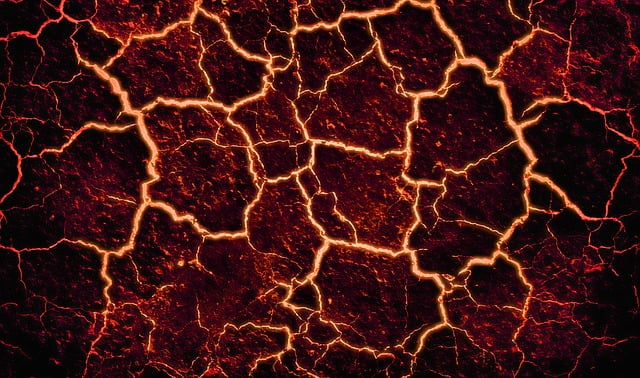Heat maps provide a visual guide to user engagement on digital platforms, revealing hotspots and coldspots of interaction. By using heat targeting, designers optimize interfaces, enhance CTAs, and personalize experiences, driving higher engagement and conversion rates. Heat mapping tools analyze thermal energy transfer, guiding content placement, layout adjustments, and CTA design for improved UX. Real user data from heat tracking enables iterative design improvements based on behavior insights, creating enjoyable, intuitive journeys aligned with efficiency and comfort standards.
Heat targeting is a powerful UX strategy that leverages heat maps to visualize user behavior, providing insights into areas of interest and pain points. By understanding where users interact with your interface, you can personalize content, layout, and call-to-actions for optimal engagement. This iterative design approach, based on real user data, ensures continuous improvements, ultimately driving higher conversion rates. Let’s explore these key aspects to enhance your user experience.
- Understanding Heat Maps: Visualizing User Behavior
- Identifying Pain Points and Areas of Interest
- Personalizing Content and Layout for Optimal Engagement
- Optimizing Call-to-Actions for Higher Conversion Rates
- Iterative Design Improvements Based on Real User Data
Understanding Heat Maps: Visualizing User Behavior

Heat maps offer a powerful tool for visualizing user behavior on digital interfaces, providing insights into where users click, hover, and scroll. By representing this data as colors, heat maps highlight areas of high engagement (hotspots) and regions of low interaction (coldspots). This visual approach simplifies complex user patterns, enabling designers and developers to make informed decisions about interface improvements.
Understanding these heat signatures is akin to deciphering a user’s journey through a website or app. For instance, intense heat in the navigation bar suggests users find it intuitive, while sparse activity in certain sections may indicate usability issues. By addressing these insights, designers can optimize layouts, enhance call-to-actions, and ultimately, create more engaging experiences that align with natural user behavior—a process not dissimilar to managing heat stress in materials, where understanding temperature distributions leads to improved design and performance, be it in the context of heat exchangers, buildings’ thermal properties, or even geothermal power generation. Visit us at alloy composition effects anytime for more insights into material property analysis and design solutions that enhance user experiences without compromising functionality.
Identifying Pain Points and Areas of Interest

Identifying pain points and areas of interest is a crucial step in enhancing user experience (UX) through heat targeting. By utilizing heat flow simulation tools, designers can visualize where users’ attention is drawn on a website or application—a process that reveals both prominent areas of interest and overlooked zones. This data is invaluable for understanding user behavior, as it goes beyond mere aesthetics to pinpoint functional elements that demand attention or areas that cause friction. For instance, Fick’s laws of diffusion highlight how heat (or in this context, user interaction) spreads from hotter to cooler regions, helping to identify content or features that are either too prominent or insufficiently engaging.
This strategic insight enables designers to make data-driven decisions on layout, content placement, and feature prioritization. For example, identifying a high concentration of heat in a particular button can guide the development of more efficient call-to-actions (CTAs). Similarly, areas with low heat interaction might indicate content that needs improvement or redistribution. Efficiency optimization isn’t just about enhancing visual appeal; it’s about aligning design with user expectations and behaviors, ensuring that every element serves a purpose in guiding users towards their goals—all while maintaining thermodynamic equilibrium within the digital interface.
Personalizing Content and Layout for Optimal Engagement

Personalizing content and layout is a powerful strategy to enhance user experience (UX), and heat targeting plays a pivotal role in achieving this. By analyzing user behavior through tools like infrared camera applications, designers can gain valuable insights into how visitors interact with a website or application. This data reveals ‘hotspots’ where users spend the most time, click, or scroll, allowing for tailored content delivery. For instance, if a heat map shows a high concentration of interest in a specific product category on an e-commerce site, that information can guide the placement and emphasis of related products and content, ensuring optimal engagement from the moment a user lands on the page.
This personalized approach extends beyond content; it also influences layout adjustments to capture and retain user attention. For example, using heat data, developers might realize that users tend to ignore certain sections or elements on a webpage, prompting them to reevaluate the design hierarchy. This could involve rearranging content, simplifying complex layouts, or implementing interactive features in underutilized areas, ultimately creating a more intuitive and appealing interface. By harnessing the power of heat targeting, businesses can ensure their digital spaces cater to user preferences, leading to increased satisfaction and conversion rates—a significant advantage, especially when compared to one-size-fits-all approaches, such as those employed in traditional parabolic trough systems or building energy audits.
Optimizing Call-to-Actions for Higher Conversion Rates

Optimizing Call-to-Actions (CTAs) is a powerful strategy to enhance user experience and drive higher conversion rates, all while leveraging the concept of heat—specifically, thermal energy transfer. By understanding how users interact with different elements on a page, designers can strategically place CTAs to capture attention and guide users towards desired actions. Heat mapping tools play a crucial role here, visualizing where visitors spend their time, click, or scroll, allowing for data-driven decisions.
For instance, identifying areas of high heat activity near a “Subscribe” CTA could indicate user interest in receiving newsletters. This insight enables designers to refine the CTA’s design, copy, and positioning to make it more appealing and accessible. Moreover, exploring modern heat engine trends and understanding the Seebeck effect applications can inspire innovative ways to visually represent heat on interfaces, further engaging users. Encouraging visitors to visit us at Seebeck effect applications anytime offers an opportunity for discovery and learning while optimizing UX through advanced thermal conductivity measurement techniques.
Iterative Design Improvements Based on Real User Data

Iterative design improvements based on real user data are a cornerstone of enhancing User Experience (UX). By utilizing heat targeting, designers gain valuable insights into user behavior and interactions with digital interfaces. This process involves tracking and analyzing where users click, hover, or scroll, providing a clear picture of their preferences and pain points. For instance, identifying areas of high engagement versus zones of disregard can help streamline content placement and interface layout.
Through continuous feedback loops, designers can make informed decisions to optimize efficiency and comfort in navigating digital spaces. This data-driven approach ensures that design iterations are not merely speculative but rather grounded in the actual experiences of end-users. By understanding the difference between laminar vs turbulent flow of user interactions, and considering heat capacity of gases in terms of engagement, designers can create interfaces that foster seamless and enjoyable user journeys. Moreover, these insights enable the alignment with cross-flow vs parallel flow thermal comfort standards, ultimately leading to a more comfortable and efficient digital experience.
Heat targeting is a powerful tool that transforms user behavior data into actionable insights, enhancing UX design significantly. By visualizing interactions through heat maps, designers can pinpoint popular and problematic areas, leading to informed decisions. This method allows for personalized content placement, improved call-to-actions, and iterative design refinements based on real users’ behaviors. With heat targeting, businesses can create more engaging and effective digital experiences, ultimately boosting user satisfaction and conversion rates.
